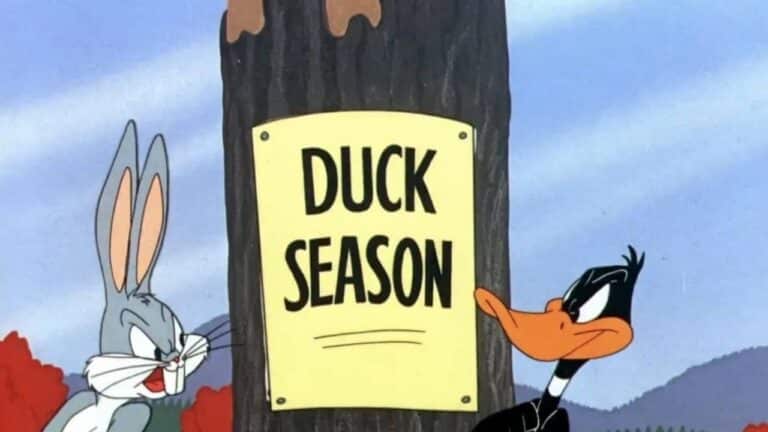Stop Buying These 25 Groceries And Save Hundreds Each Year

In this ever-fluctuating, volatile economy with a recession all but hanging in the air, people are looking to save money every way they know how…and that includes at the grocery store. According to a report from the United States Bureau of Labor Statistics, grocery prices jumped a whopping 12 percent in 2022, making it the highest price jump since 1979.
Even if you make “good” money, you’re looking to save — not spend — as much as you can. And all the “little savings” definitely add up, and sometimes they do so quicker than you think. Wouldn’t it be nice to see an end-of-year savings in the thousands, rather than just a few pennies?
With this type of price increase, it’s no wonder that people are looking to cut down on their spending. These 25 grocery items, then, are the biggest drains on your wallet — and worst of all, they’re completely unnecessary.
1. Name Brands

The biggest trick that grocery stores use to get you to spend more money is putting the name brands at eye level so consumers are more likely to purchase them. But there’s virtually no difference between name-brand groceries and the generic store brand…except for the price.
Consumer Reports notes that the average consumer saves a whopping 25 percent on their grocery bill by opting for generic brand products instead of their name-brand counterparts. And at the end of it all, you’re still getting the same products. So why pay more?
2. Kitchen Utensils

Buying kitchen utensils — such as a new spatula — at a supermarket seems like a convenient and inexpensive fix to a common kitchen problem: the lack of proper utensils when you need them most. Shopping experts, however, say that the markup you’ll pay for the utensils at the supermarket far outweighs the perceived benefit of convenience.
“There’s going to be a higher markup because you’re dealing through a distributor,” said food industry expert Phil Lempert, to Reader’s Digest. Instead, he said, consider purchasing your utensils at Walmart, a restaurant supply store, or even online. Purchasing kitchen utensils through a restaurant supply store will ensure both sturdiness and durability, making them a far superior bargain to their cheap supermarket counterparts.
3. Paper Towels

During the COVID-19 pandemic, paper products — including paper towels — were at a premium due to supply chain issues. While many people learned to live without them altogether (opting, instead, for washable cloth rags), there are still some people who prefer paper products to reusable cloth rags.
On average, though, paper towels are much cheaper at big-box stores (like Costco) and dollar stores than they are at supermarkets. Take heed, however, that grocery stores will sometimes run promotional sales on paper products, and will allow you to use manufacturer’s coupons for additional savings. Discernment is key when shopping for paper towels.
4. Pre-Packaged Produce

It may be tempting to buy a container of pre-packaged produce, especially for a “hard to cut” fruit like pineapple or melon. Not only are the pre-cut varieties of all produce more expensive than their whole counterparts, but they are more dangerous.
According to Consumer Reports, pre-cut and pre-packaged produce is more likely to be contaminated with life-threatening bacteria (like salmonella) than their whole counterparts. And, certainly, the cost of a hospital bill for salmonella makes the idea of purchasing pre-packaged produce that much less appealing.
5. Packaged Meats

For people who incorporate meat into their diets, buying packaged cuts at the supermarket appears both cheap and convenient. But professional butchers spoke to HuffPost and revealed that they’d never buy certain cuts of meat there for a myriad of reasons…including quality, cost, and safety.
The perceived savings you’ll receive from packaged meats at the grocery store is no match for the quality of goods you’ll receive from a butcher. Your health, after all, is priceless.
6. Pre-Packaged Pastries

It’s all but super-tempting to snag a box of the store-made cookies, cakes, and breads (especially if you live in Florida and you want to snag a Publix hurricane cake during the next natural disaster). But not only is it bad for your waistline (processed sugar really is the devil in food form), but it’s also bad for your bottom line.
In addition to the myriad of “bad” ingredients in the mass-produced confections (hello, palm oil), Kitchn notes that pre-packaged pastries are marked up by as much as 300 percent in the grocery store. It’s probably best to make the pastries yourself instead of relying on the supermarket to do it for you.
7. Frozen Dinners

Frozen dinners were a staple in American homes in the late 1950s and early 1960s, because it was just a weird time for American cuisine in general (hello, savory Jell-O molds). These days, however, their popularity is waning…and for good reason.
In addition to being loaded with sodium, preservatives, and trans fats, frozen dinner portions are completely imbalanced in terms of proper carbohydrate, protein, and fat portions. You’re better off buying all of the ingredients separately to save money.
8. Butter & Margarine Spreads

Butter and margarine spreads have become increasingly popular in recent years due to their convenience and their ease of use. But these products are not only unhealthy (because they contain high amounts of trans fats), but super expensive.
If you’re savvy in the kitchen, consider making your own butter. If not, purchasing butter and margarine sticks will save you quite a few dollars during your next grocery run.
9. Juices

The nutritional quality (and, more specifically, the lack thereof) of juices has been explained time and again. Supermarket juices contain very little fruit, very little fiber, and tons of added sugar.
Even fruit juices — both fresh and concentrated — are a waste of money, as the whole fruit has been proven to be much healthier than its juiced counterparts.
10. Bottled Water

If you live in an area where water from the tap is less than potable, you may be tempted to purchase bottled water at the grocery store…which, according to MindBodyGreen, is merely just tap water from another place.
You’re better off buying a filtration system and filtering your water from the tap in the long run.
11. Dryer Sheets

There are countless commercials about people loving the scent of certain fabric softeners (and, in turn, dryer sheets) so much that they’ll stand in the grocery store for hours on end sniffing it like Tony Montana in Scarface. But dryer sheets are a waste of money in more than one way.
According to Today.com, dryer sheets reduce the efficacy of towels and can damage your dryer by coating the sensor with a film of quasi-detergent. Do you really want to get a new dryer — which costs hundreds of dollars — before you need to?
12. Out of Season Produce

There are a myriad of eco-friendly reasons why you shouldn’t buy out-of-season produce at all — let alone at a grocery store — but the biggest reason is, of course, cost.
Out-of-season produce is typically more expensive than produce in season, and it’s also not as nutritive as in-season produce. Trust us: you don’t need blueberries in the wintertime that badly. There are plenty of other seasonal fruits that will work just fine.
13. Liquid Body Wash

Debates abound as to whether liquid body wash is preferable to bars of soap, but the latter is a better fit for our wallets in terms of cost.
Consumer Reports also notes that most bars of soap are more alkaline (that is, with a pH higher than 7) than human skin, making it preferable to the more acidic (that is, with a pH lower than 7) body washes.
14. Microwaved Popcorn

Snacking should be kept to a minimum for health reasons, but microwave popcorn shouldn’t be anywhere on your grocery list.
In addition to being much more expensive than the jars of regular popcorn, microwaved popcorn has ingredients that are proven carcinogens. It doesn’t matter how cheap it is — no snack is worth getting cancer, either in the short term or the long term.
15. Cleaning Supplies

While the more eco-friendly amongst us would prefer to make their own cleaning supplies (and for the record, a gallon of white vinegar with lemon rinds is the bee’s knees when it comes to degreasing — plus it smells great), the rest of us would like to purchase them from our nearest retailer.
But cleaning supplies have a huge markup — sometimes as much as 100 percent — at the supermarket, which is why many cleaning professionals recommend buying those products online.
16. Beauty Products

It may be tempting to pick up a bottle of shampoo, conditioner, or even some makeup while you’re doing your weekly grocery run. But if you want to save money, get your beauty products elsewhere.
Reader’s Digest notes that markups on bottles of shampoo can be as high as $20 if you buy it at Kroger as opposed to Sam’s Club. That’s a huge price differential.
17. Herbs

Some cultures use herbs more than others. But most Americans don’t usually need more than a box of salt and about four or five different jarred herbs in their pantry.
By the time you use most of the herbs you’ve purchased, they’ve usually expired (most jars of herbs don’t last longer than 6 months). It’s best — and more cost-effective — to buy herbs fresh from the grocery store (or, better yet, a farmer’s market).
18. “Snack Packs”

Parents of school-aged children appreciate the convenience of a “snack pack,” which is a quick and easy way to give Johnny and Amber a pint-sized snack with their peanut butter and jelly.
But Mashed notes that most “snack packs” have a 50 percent markup in the grocery store, making it less than cost-efficient.
19. Baking Mixes

Consumers often pay a premium price for “baking mixes” (such as Bisquick, whose two-pack retails for almost $30) which are made of flour, corn starch, vegetable oil, baking soda, sugar, and salt.
Buying each of these ingredients separately and mixing them as you need them costs nowhere near $30, so why waste the money?
20. Shredded Cheese

Pre-shredded cheese is far more expensive than whole blocks of cheese — sometimes nearly $2 per pound more — and you’re not getting whole cheese in the bags, either.
According to The Manual, bags of shredded cheese are often coated with potato starch, cellulose, and artificial preservatives to make it “keep” better. (That’s also why shredded cheese tastes different from whole cheese.)
21. Name Brand Coffee

People think they’re saving money by buying a pound of, say, Starbucks or Dunkin Donuts coffee at the grocery store. In reality, though, they’re getting ripped off the most.
Mashed.com discovered that coffee — especially name-brand coffee — has a markup of almost 100 percent at the grocery store. So, if you’re really in the mood for a taste of Dunkin at home, stop by a big-box store (like Costco) to get your fill.
22. Salad Dressing

Americans are a strange bunch, in that they are a people that prefer to slather unhealthy creamy salad dressings on their otherwise healthy vegetables to make them appeal to their palettes. But salad dressings are one of the worst things to buy in the supermarket.
“Salad dressings – even the organic ones – are often full of bad oils and rarely contain heart-healthy extra virgin olive oil,” notes Mashed. “Making your own salad dressing at home is cheaper and healthier. Whipping up a small batch of an all-purpose vinaigrette once a week is easy and ensures freshness – just throw all the ingredients, which are pantry staples, in a jar and shake.”
23. Pet Food

Fido and Fluffy both need to eat and they — like you — should eat the best available food to live a long and happy life. That quality food, however, won’t come from your local supermarket.
The pet food brands available at the grocery store are filled with all sorts of toxic chemicals, including butylated hydroxyanisole (BHA), butylated hydroxytoluene (BHT), and ethoxyquin.
24. Canned Beans

People who incorporate beans into their diet for cultural and health reasons sometimes find that it’s more convenient to purchase cans of beans over their whole-bagged counterparts.
In reality, though, canned beans are stuffed with sodium and trans fats — and the whole-bagged option is cheaper, pound for pound, than the canned option.
25. Flowers

Buying flowers at the grocery store seems like a cost-effective way to make a good impression on a first date. In reality, though, there are a lot of hidden costs to that bouquet.
In addition to not lasting as long as flowers from a nursery or a professional florist, grocery store flowers include extra charges for things like wrapping, cards, and vases — all of which are included by a professional florist.





